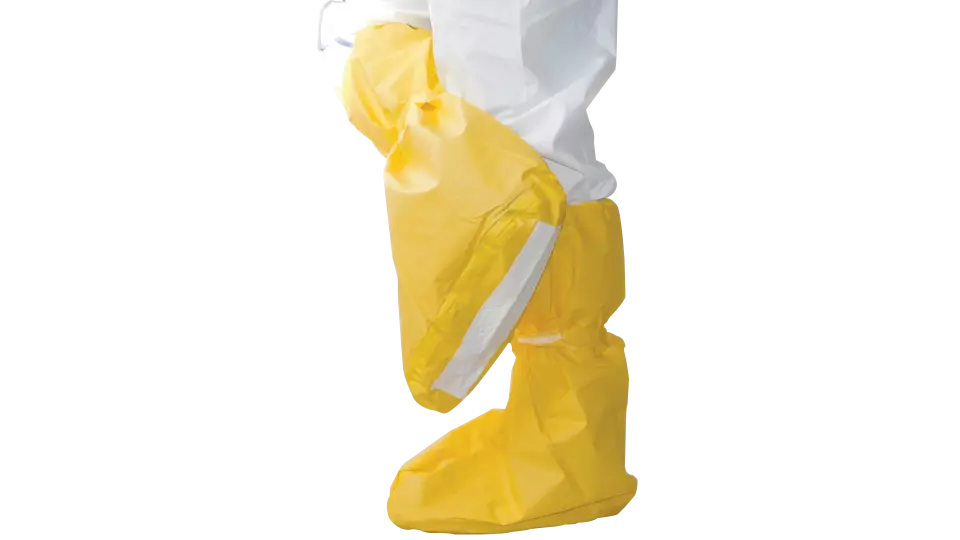WeeSafe WeeJet Overboot with Anti Slip Sole Type PB 3/4/6, Yellow
5.0 / 5
Product description
Professional overboot designed for superior chemical and biological protection featuring HDPE coating and heat-sealed seams. These protective boots extend 50 cm to provide knee-high coverage and incorporate antistatic properties for electrostatic discharge protection. The design includes elastic tightening and calf support for secure positioning during use.
Product Features:
- HDPE coating for chemical and biological protection
- Heat-sealed covered seams for splash resistance
- Elastic knee tightening with calf support strap
- Antistatic material for electrostatic charge dissipation
- 50 cm height coverage
Technical Details:
- Type PB 3/4/6 protection classification
- PPE Category III certification
- Chemical and biological protection capability
- Pressure-resistant splash-proof construction
Recommended Applications:
- Protection against petroleum products
- Protection from acids (nitric and sulfuric)
- Fine powder exposure protection
- Wastewater handling
Standards:
- EU Regulation 2016/425 compliant
- CE certified
- EN 1149-5 antistatic protection
- EN 14126 biological protection
- Electrical Protection
- Chemical Resistance
- Heat & Flame Resistance
Request a free sample
Test first and buy later. Visit any product page to request your free sample.
Standards and labels
Medicom delivery terms
Free delivery for all Medicom products
291,91 €
Price per 1 package (200 pcs)
1,46 € / piece
Free delivery
A carton contains 1 package (200 pieces)
Need larger quantities?
Other products you may like
Recently viewed
Other products you may like
Similar products you may like
Autonomous sourcing platform
The most efficient way to source and order supplies for your operations



